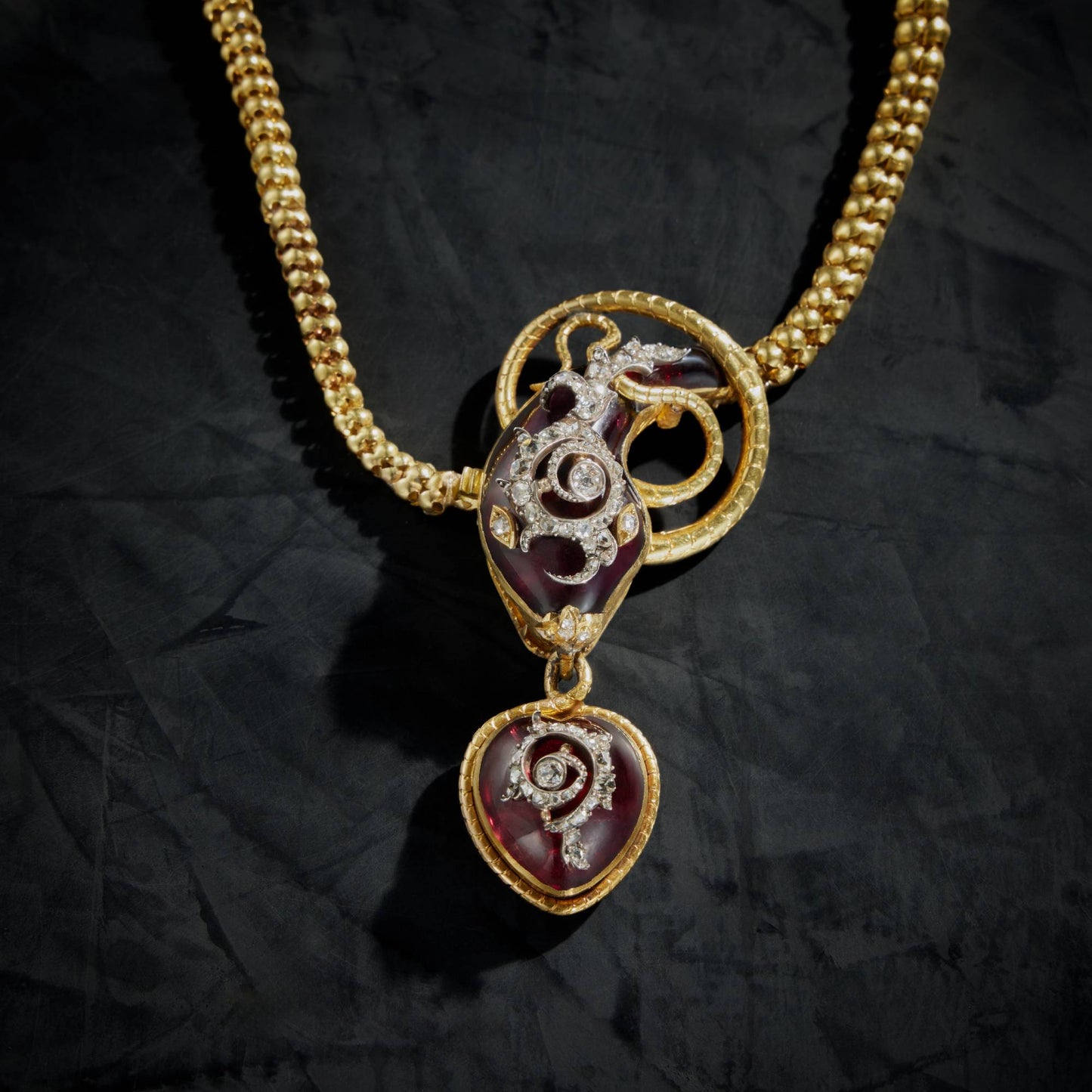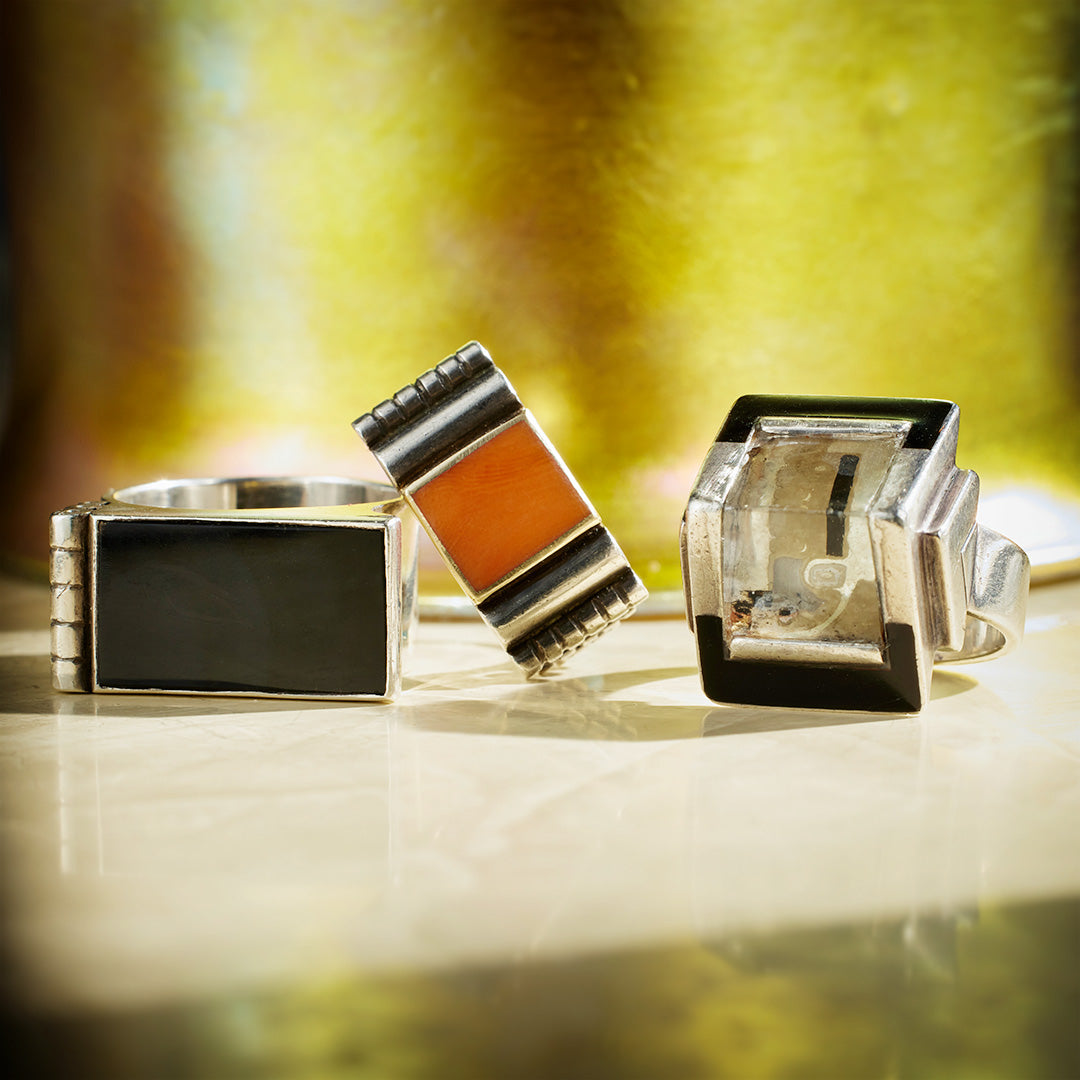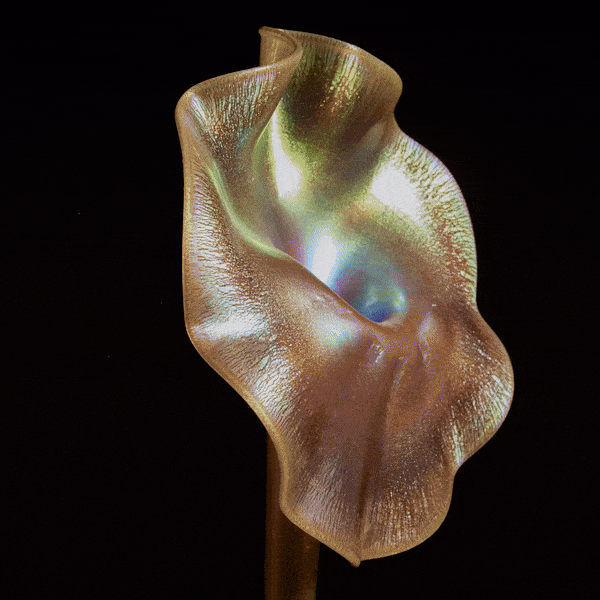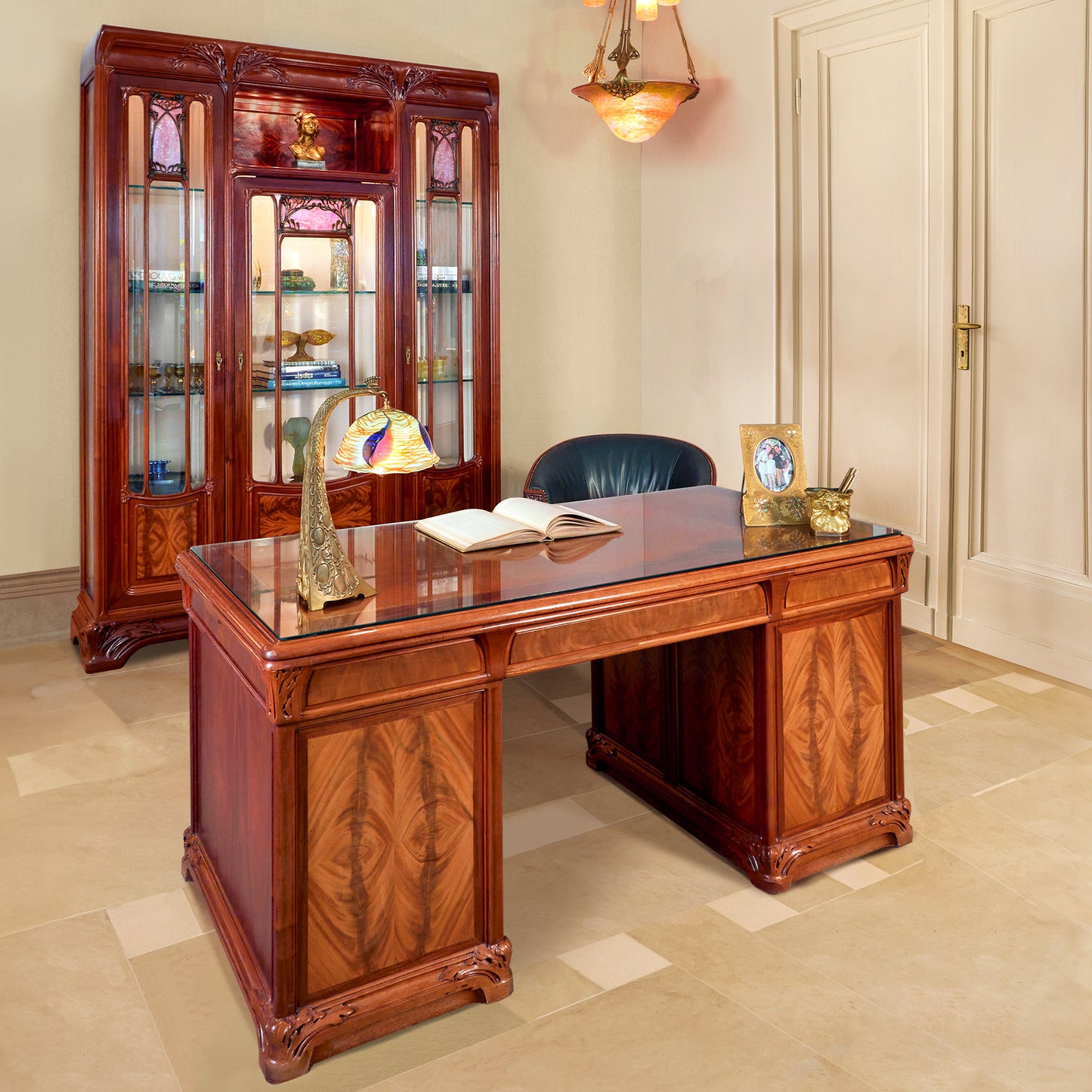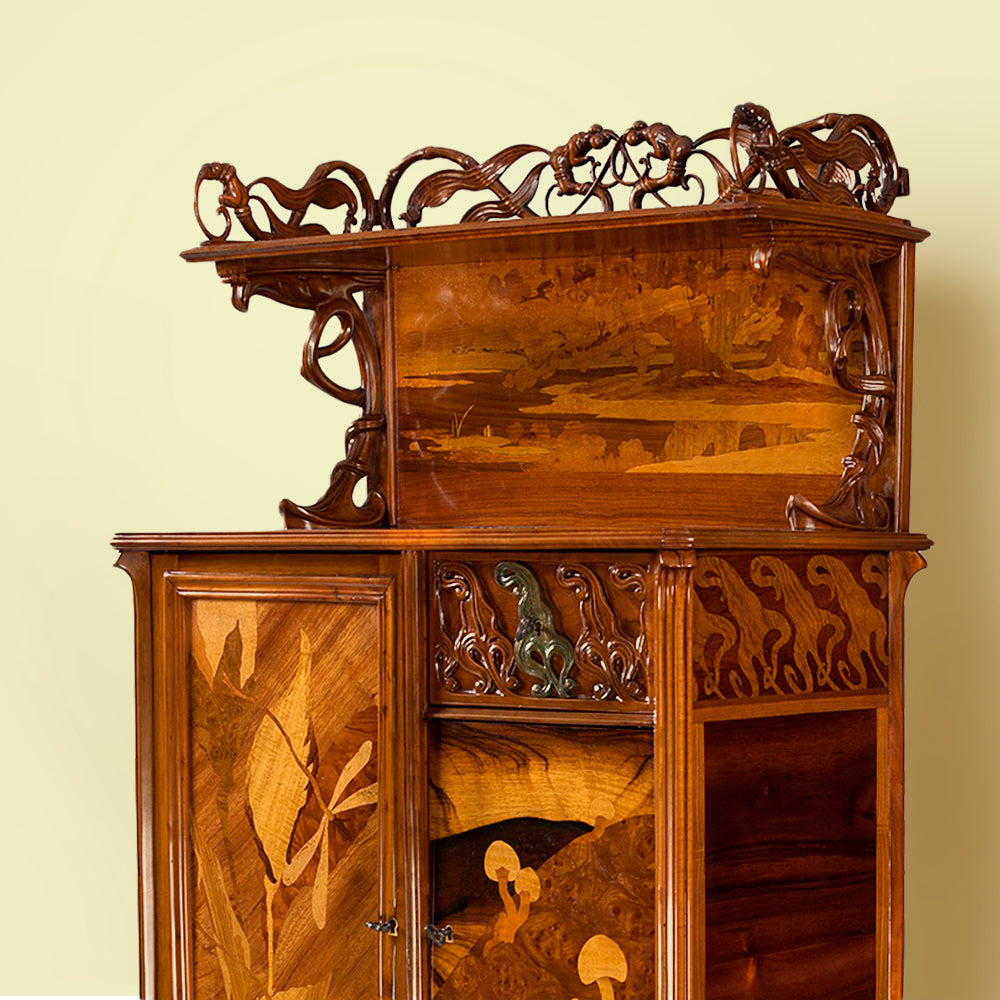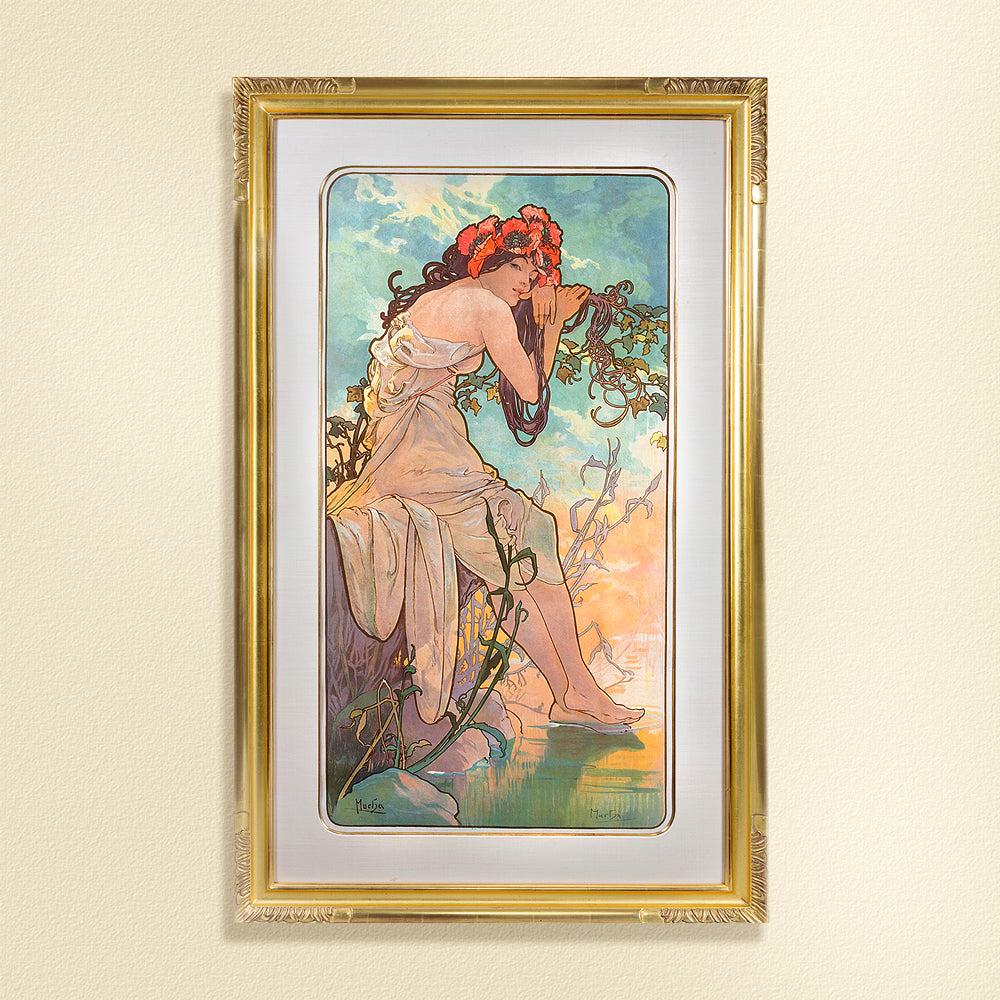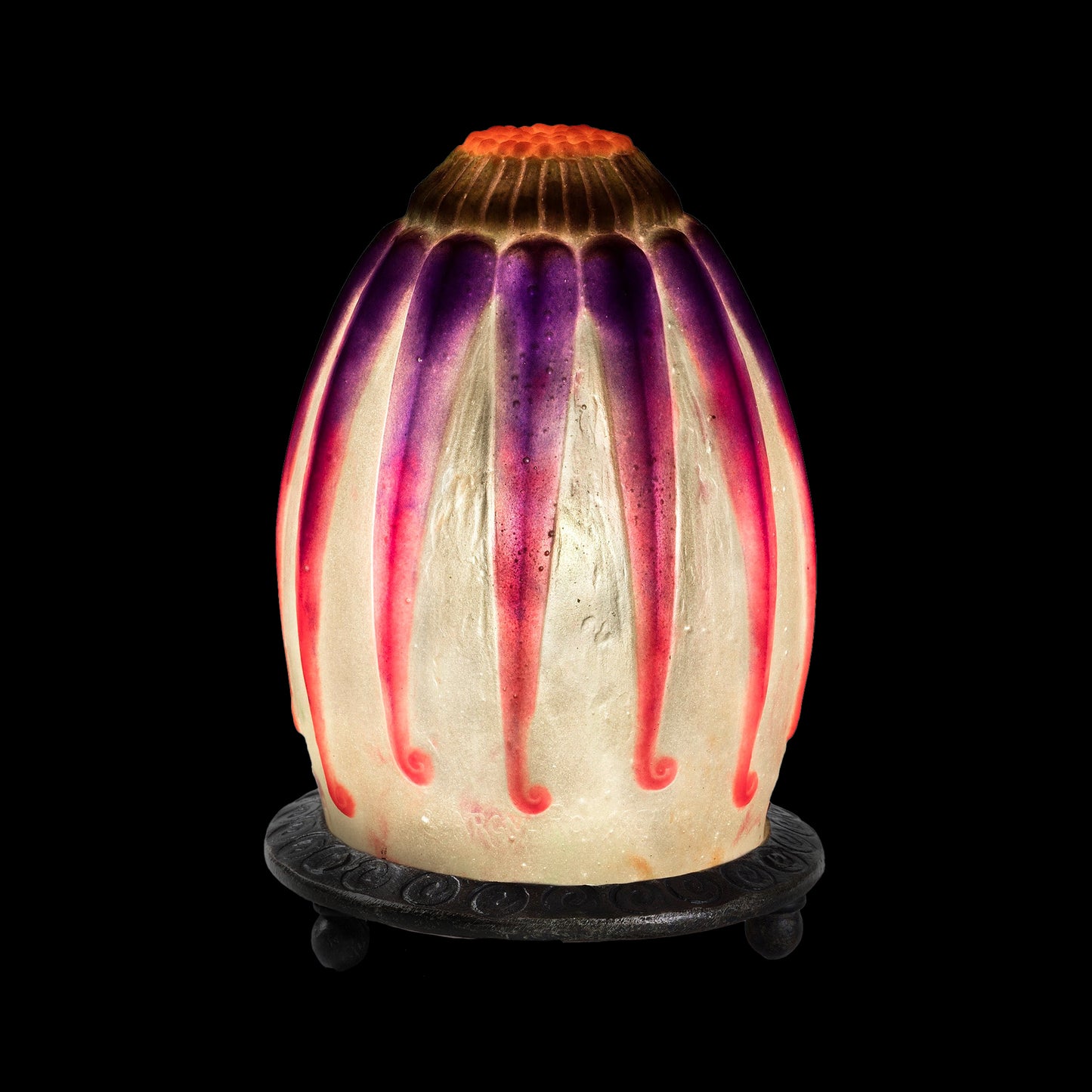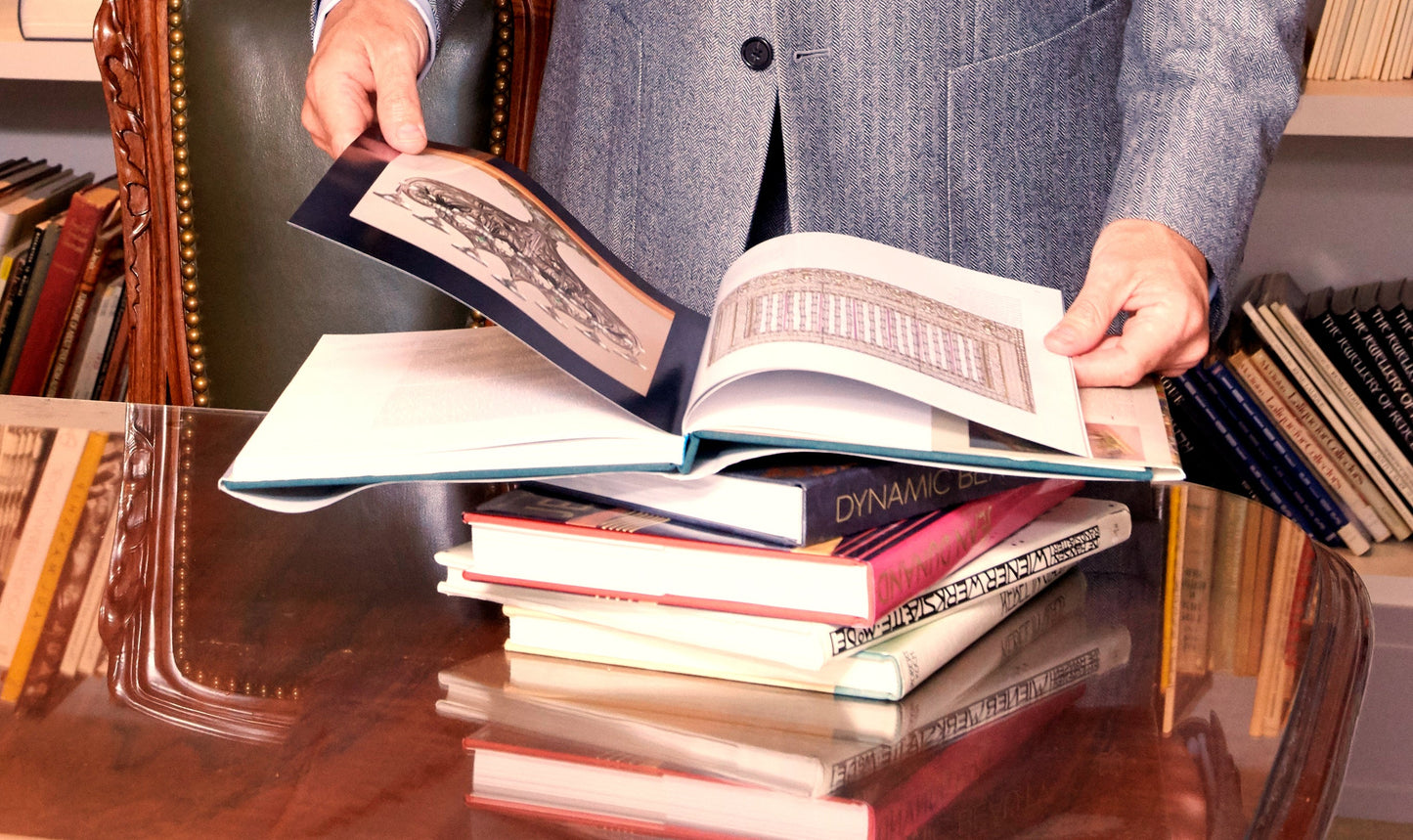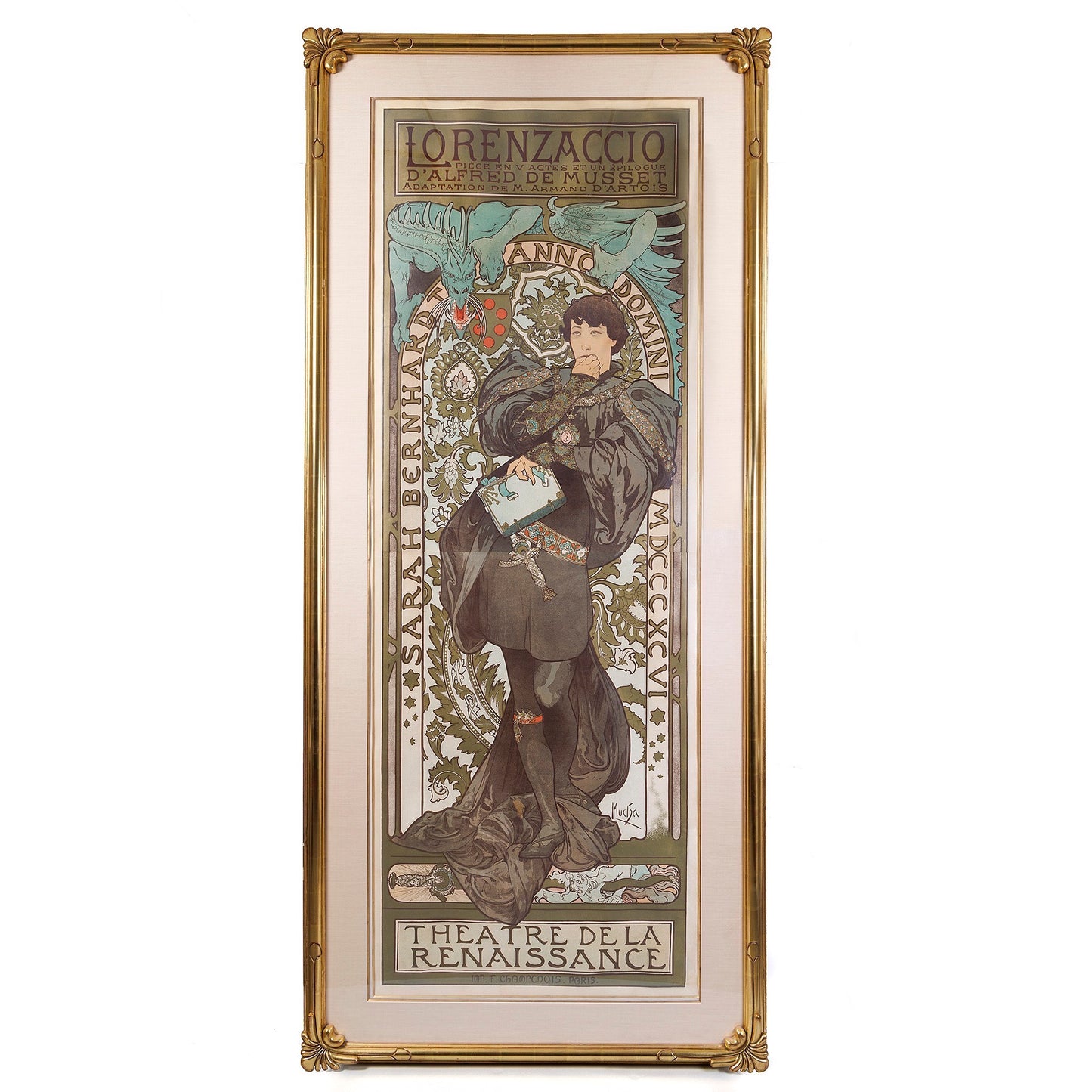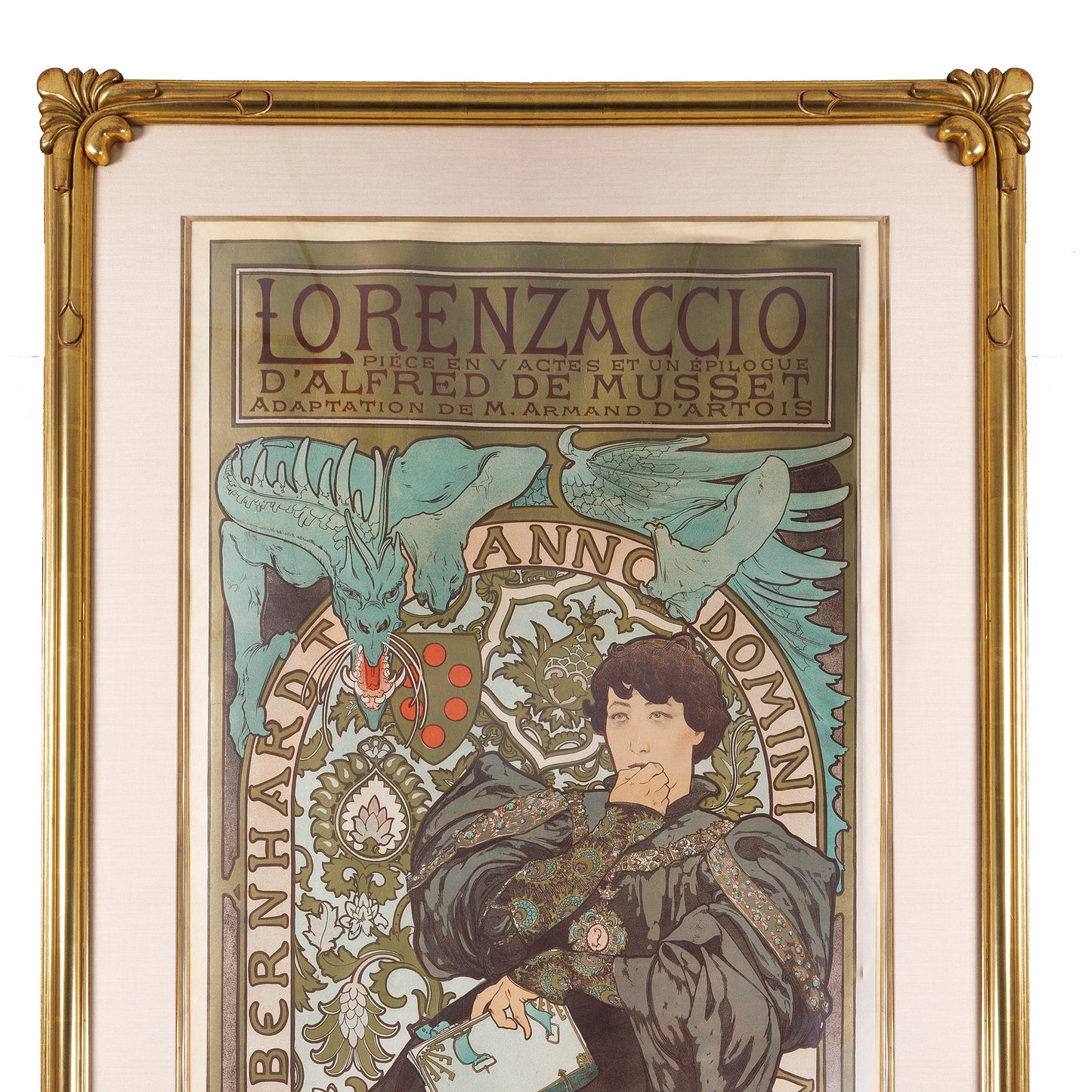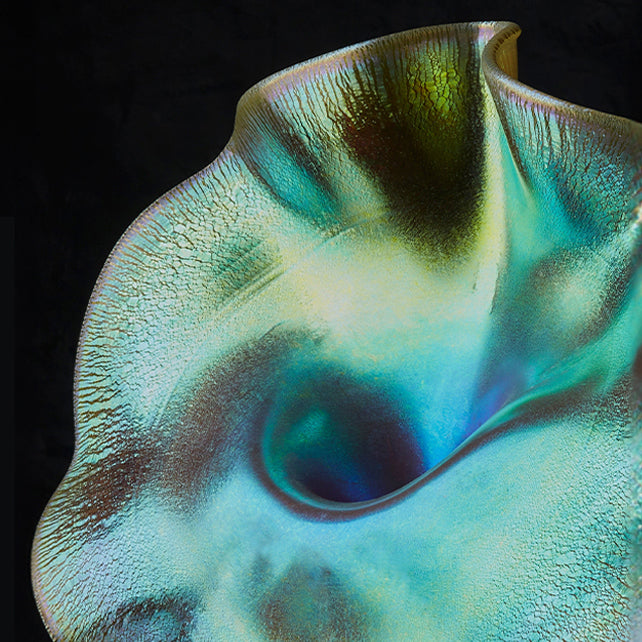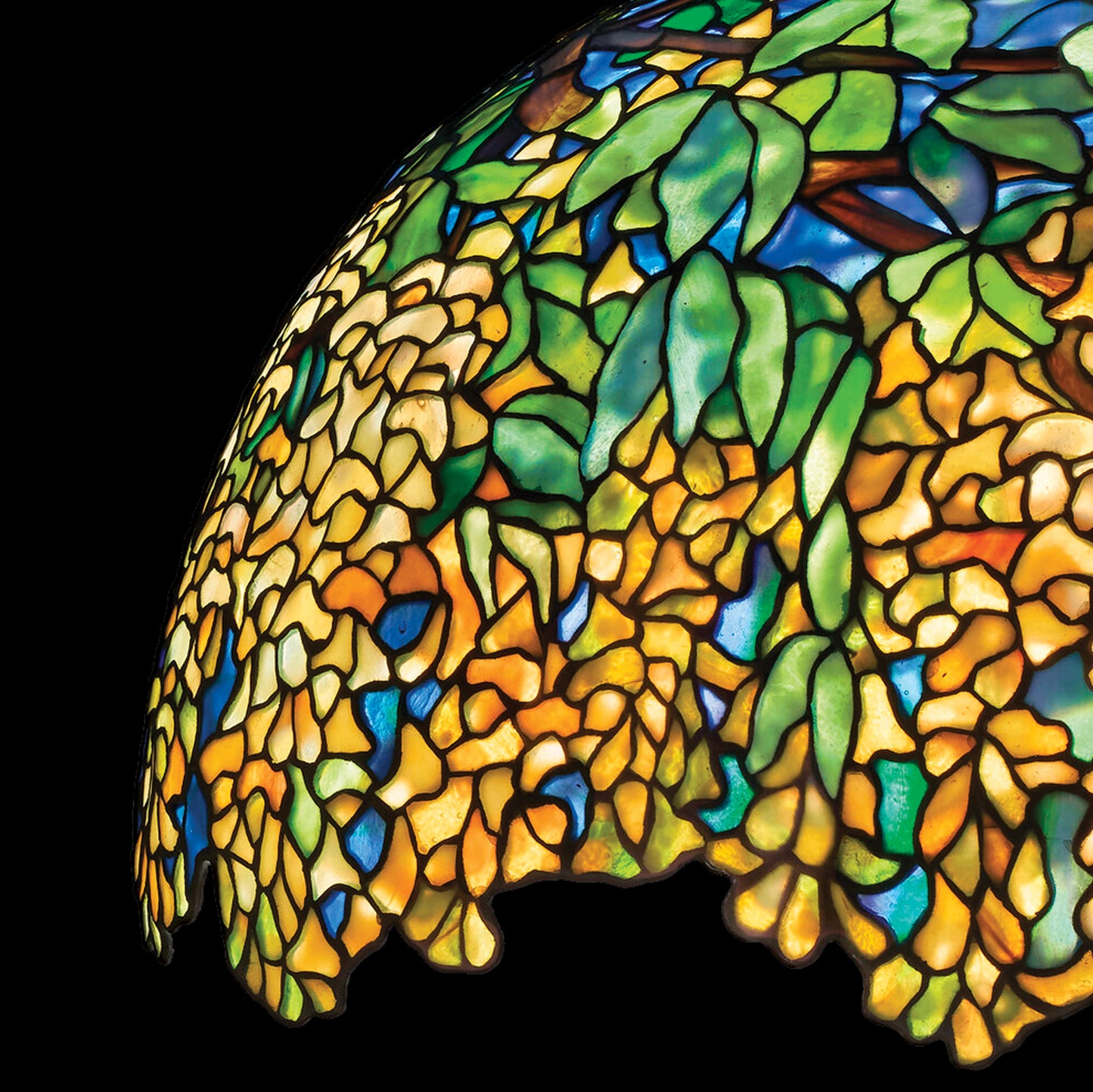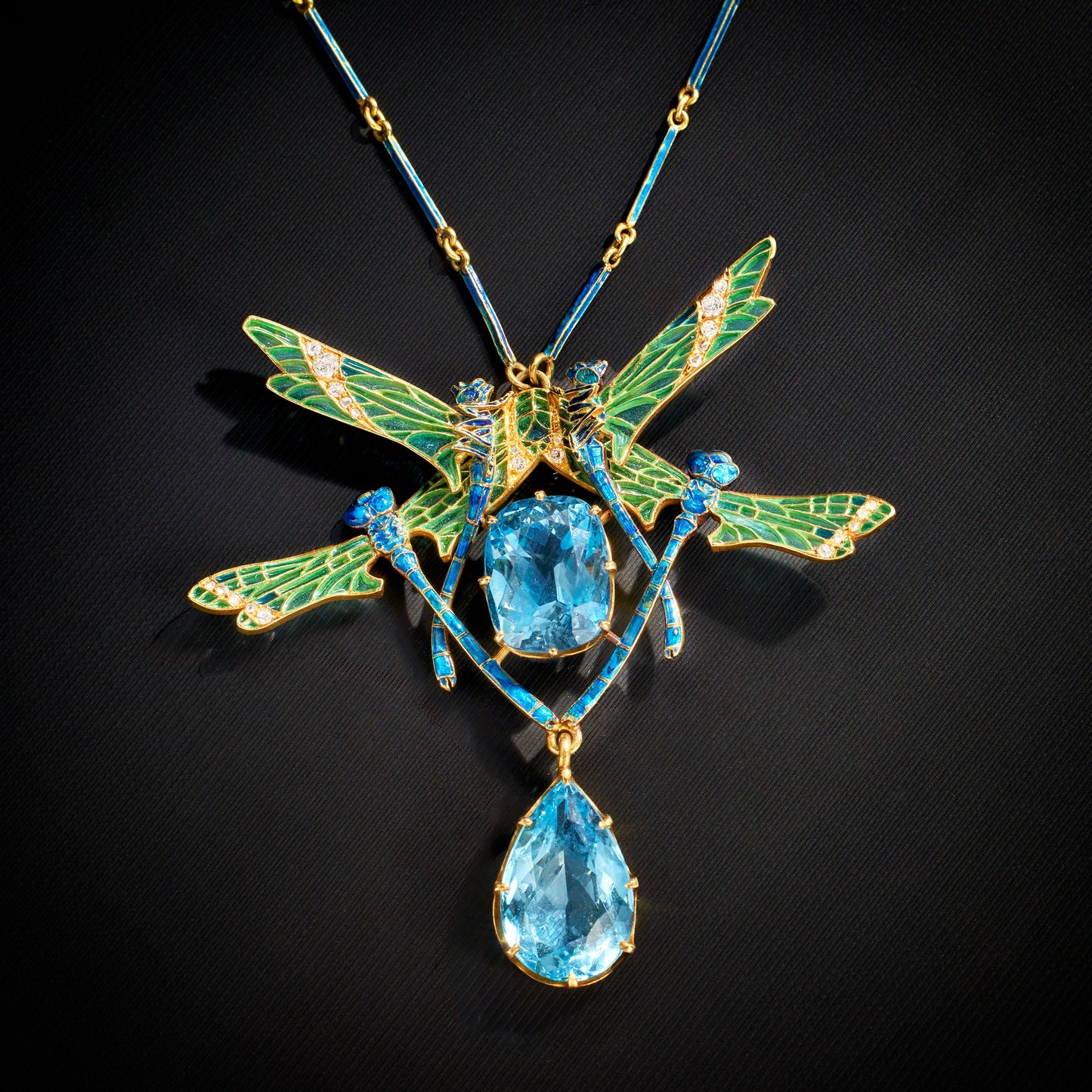Mucha personally designed much of the weaponry used in Sarah Bernhardt’s productions, and Lorenzaccio was no exception. In this play, Bernhardt wielded two swords, each a testament to Mucha’s meticulous craftsmanship and his gift for visual storytelling. The principal sword, central to both the assassination and the arc of the narrative, received especially detailed attention. Worn at Lorenzaccio’s girdle, the principal sword features a pommel shaped like the ducal crown of Florence—a hoop crown set with delicate coral gemstones. Flowing from the pommel, the grip mimics the texture of the Golden Fleece, encased in wire studded with sapphires. This allusion foreshadows the aftermath of the assassination: the rise of Cosimo de’ Medici, who would later be awarded the prestigious Order of the Golden Fleece. The play concludes with his crowning. The downward-curving quillons end in a dramatic medallion adorned with a peacock motif rendered in turquoise, enamel, and gold. The blade itself is a flammard—a flame-bladed weapon whose rippling edges shimmer like heat on sunbaked stone. A second version of this sword, depicted at the bottom of the poster, shares the same elaborate design but features shorter quillons and a disc-shaped pommel encrusted with pearls.
The incorporation of pomegranate-patterned textiles, peacocks, and aigrettes lends Lorenzaccio an exotic flair drawn from the visual culture of the Ottoman Empire. Following the assassination of his cousin, Duke Alessandro, Lorenzaccio fled through Ottoman-controlled territories stretching across the Balkans, Anatolia, and the eastern Mediterranean—regions beyond the reach of Medici influence.
